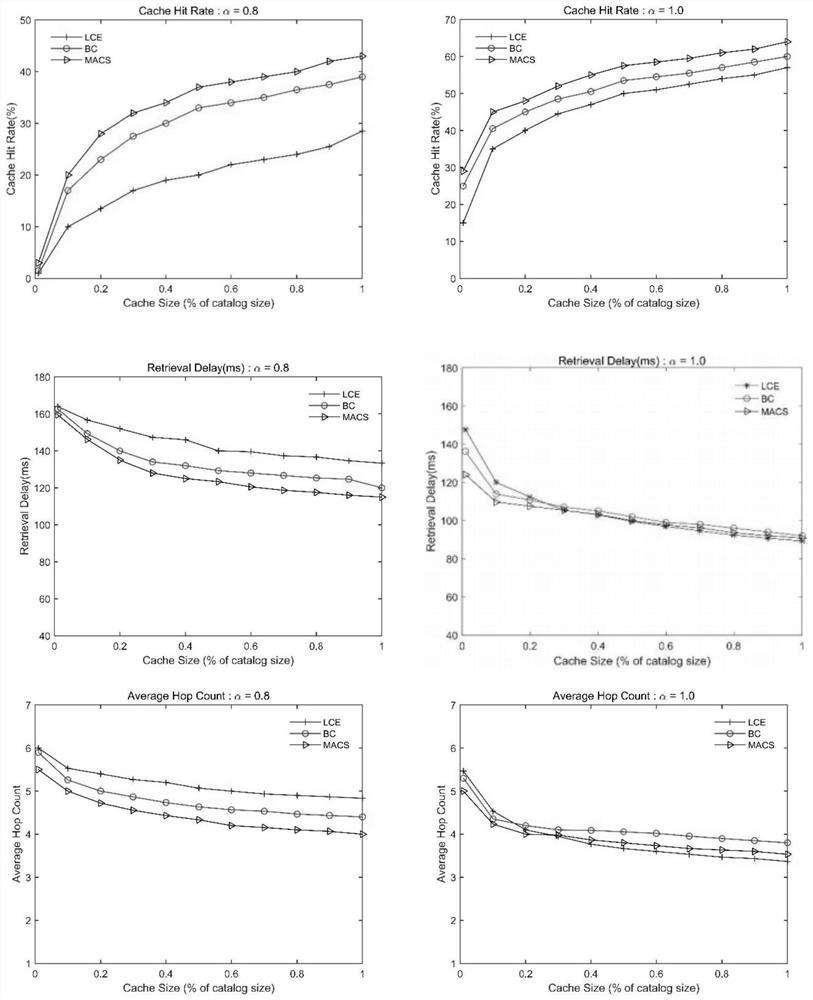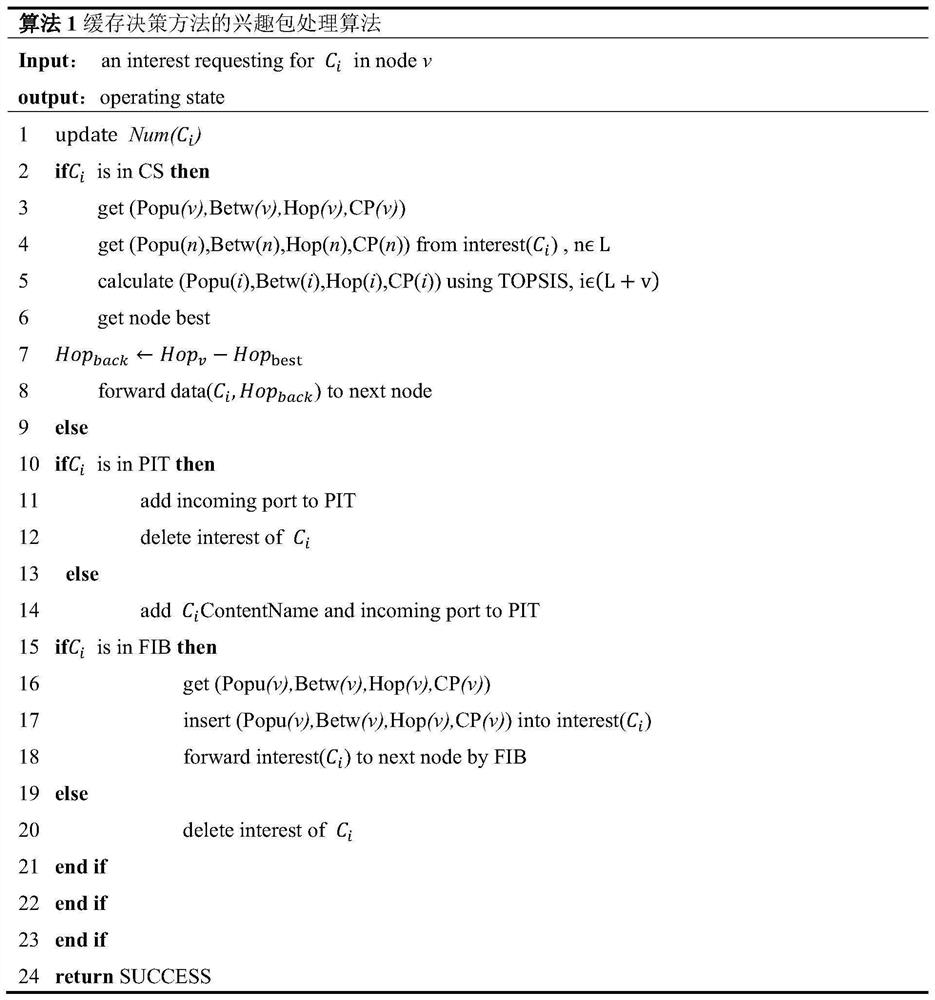Multi-attribute collaborative caching method for information center network cache privacy protection
An information-centric network and privacy protection technology, applied in the field of multi-attribute collaborative cache decision-making, can solve problems such as exposure of retrieval privacy, user cache privacy security threats, etc., to reduce privacy leakage, reduce cache redundancy, and improve network performance.
- Summary
- Abstract
- Description
- Claims
- Application Information
AI Technical Summary
Problems solved by technology
Method used
Image
Examples
Embodiment Construction
[0018] The present invention will be further described below in conjunction with the accompanying drawings.
[0019] The present invention analyzes the cache privacy leakage problem of the information center network, and proposes a multi-attribute cooperative cache decision-making method for information center network cache privacy protection based on the existing cache privacy protection method and utilizing cooperative cache between nodes.
[0020] The present invention realizes the attribution uncertainty of cached content, reduces the possibility of cached privacy leakage, improves network performance, improves cache hit rate, and reduces retrieval time delay and average hops.
[0021] The present invention collects the future popularity of the request content of the nodes along the way, the node betweenness, the node hop count, and the node cache pressure by using the interest packet to form a four-tuple information set, and then uses the TOPSIS algorithm to hit the node (...
PUM
 Login to View More
Login to View More Abstract
Description
Claims
Application Information
 Login to View More
Login to View More - R&D
- Intellectual Property
- Life Sciences
- Materials
- Tech Scout
- Unparalleled Data Quality
- Higher Quality Content
- 60% Fewer Hallucinations
Browse by: Latest US Patents, China's latest patents, Technical Efficacy Thesaurus, Application Domain, Technology Topic, Popular Technical Reports.
© 2025 PatSnap. All rights reserved.Legal|Privacy policy|Modern Slavery Act Transparency Statement|Sitemap|About US| Contact US: help@patsnap.com



